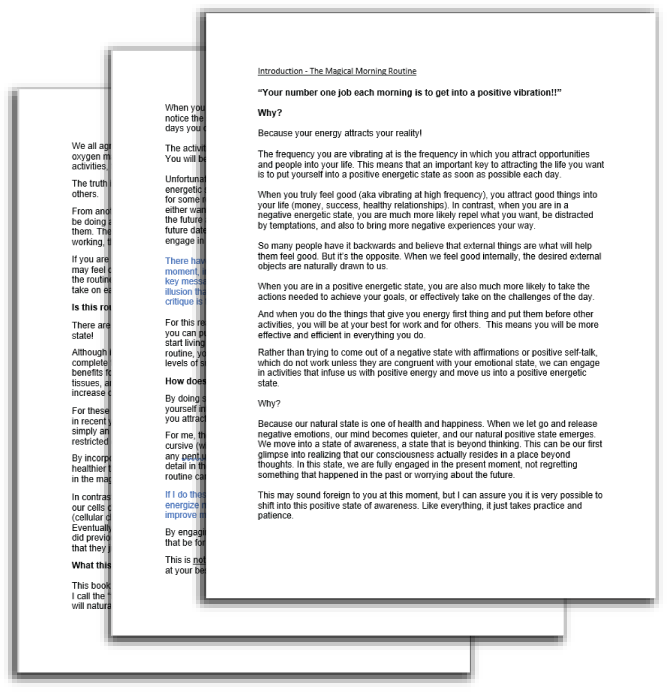Becoming Fasted Adapted: How to Fast Effectively
Written by Stephen Anton PhD on March 20, 2024

Have you ever wondered why some people seem to be able to fast for long periods of time without much trouble?
This is because they are “fasted-adapted,” which means that their body has successfully adjusted to and is able to efficiently function in a fasted state.
When one is fasted-adapted, their body has become efficient at utilizing stored fat for energy in the form of ketones and maintaining stable blood sugar levels while fasting. This generally results in improved insulin sensitivity and enhanced metabolic flexibility (ability to both glucose and ketones for energy).
Once someone has become fasted adapted, it is possible to transition to longer fasts and the practice of intermittent fasting becomes much easier.
To become fasted-adapted takes a little time, however, and the process involves both behavioral changes and physiological adaptations.
Becoming Fasted Adapted: Physiological Changes that Occur While Fasting
When you first start fasting, your body learns to switch from using glucose as its primary source of energy to using stored fats (in addition to glucose for energy). The fasting itself can lead to a decrease in insulin levels, which in turn triggers the body to start burning stored fat for energy
In order to produce this alternative type of energy, the body needs to increase its production of certain enzymes and proteins. This involves activation of the metabolic switch which changes the process in which our cells produce energy (ATP molecules). Ultimately, this results in a new physiology while fasting.
To facilitate these changes, there is an increase in the activity of enzymes involved in lipolysis, which is the process in which the body breaks down fats, and a decrease in the activity of enzymes involved in glycogen synthesis, which is the process through which the body stores energy.
Fasting can also lead to changes in the levels of certain enzymes involved in metabolism and energy production.
Additionally, the body may experience changes in hormone levels, such as increased production of growth hormone and decreased insulin levels. These adjustments help the body efficiently utilize stored energy and maintain stable blood sugar levels during fasting.
These changes take some time to occur. So the transition to becoming fasted-adapted can take a few weeks to several months, depending on your state of metabolic health, lifestyle habits, and other factors, such as your stress levels.
For these reasons, I would not recommend someone try longer fasts (16 hours or more) if they have never fasted before. But rather follow the recommended behavioral changes below to slowly but surely become fasted-adapted.
Process of Becoming Fasted Adapted: Key Behavior Changes in Intermittent Fasting
First, you need to train the body to become less addicted to carbohydrates and running off glucose by adding healthy proteins and fats into each meal and snack.
Second, you practice extending the fasting time-period between meals and reducing your snacks so that the body becomes less reliant on immediate sources of energy from food.
Third, you incorporate 30 to 60 minutes of movement every day to keep your glucose levels in check. This will be critical to the physiological adaptation that occurs when one incorporates fasting into their lifestyle. An ideal time to move and go for a walk is after eating a meal.
Fourth, you move your dinner time up by 30 to 60 minutes, unless you already eat an early dinner (before 6 pm), to help the body transition into a fat burning state while you sleep.
Fifth, each morning you slowly but steadily extend the amount of time you are in the fasted state by postponing the time of your first (break-fast) meal.
Warning Signs
If you try to fast longer than your body is adapted to fasting, then it is likely that you will experience one or more symptoms, such as nausea, headaches, or fatigue, during the adjustment period.
If you experience any of these symptoms, it is a sign you are pushing beyond the body’s comfort or adaptation level. If this occurs, it is highly recommended to take a break from fasting and try again another day.
On the other hand, you know you are in a healthy fasted state and able to keep going is by checking the following
- You are very comfortable fasting for at least 12 hours
- None or only minor feelings of hunger while fasting
- Great focus and mental clarity
- Energized yet calm feeling
- Absence of headache, dizziness, and light-headed feelings
Factors that Can Affect Fasting Adaption Process
Of course, there are multiple factors that can affect how easily your body adapts to an intermittent fasting routine. These include your sleeping habits, what you had at your last meal, and how much physical activity you engage in.
For example, if your last meal was salmon and vegetables, this will help you transition to a healthy fasting state more than if your last meal was a piece of pie or a doughnut. On the other hand, engaging in physical activity at a level that is beyond what your body is accustomed to could also make the fasting period more challenging.
For this reason, it is recommended that you not change your physical activity too much while you are in the process of becoming fasted adapted. This is because both fasting and physical activity can be stressors on the brain and body. And you want to minimize the stress from other sources during this fasting adaptation process.
How to Combine Fasting and Physical Activity Into Your Lifestyle
Over time, you can incorporate moderate intensity exercises, such as brisk walking or bike riding, while fasting and see how you feel while doing them. These types of exercises can help your body flip its metabolic switch in the fasted state as they increase the energy demands on the system.
As you become more adapted to fasting, and If desired, you can incorporate more intense exercises, such as running or lifting weights, into a fasted morning workout. The more intense moves will send a signal to mobilize more fat for energy, in the form of ketones, while also elevating growth hormone levels.
Once you are fasted adapted, there are no limits to the types of workouts you can do in the fasted state. This is because the body has become metabolically flexible and is now able to utilize both ketones and glucose as sources of energy.
Temporary Stress Followed By Recovery Is Key
But like everything, too much of a good thing can become a bad thing. If prolonged or too intense, such workouts could place too much stress in the body, even if you are fasted-adapted.
The key is to place the right amount of stress at the right time. This will stimulate the biological process of hormesis, which is how our cells and body adapts to temporary stress and become healthier and more resilient.
If you dislike the idea of working out in the morning, there is nothing wrong with working out later in the day in a non-fasted state. The after burn from such workouts could also increase energy expenditure and thereby accelerate the activation of the metabolic switch in the fasted state.
There is not one and only one right way. Both intermittent fasting and exercise at the right doses are beneficial to your health. So once you find the system that works for you, then I recommend to continue and “not mess with success” too much
16/8 Intermittent Fasting: Tips from an Industry Expert
Written by Stephen Anton PhD on June 30th, 2023

The 16:8 intermittent fasting plan, also known as the 16:8 diet or time-restricted feeding, is a popular fasting method that involves restricting your daily eating window to a specific time-period and fasting for the remaining hours of the day.
16/8 Intermittent Fasting Plan
The “16:8” refers to the fasting and eating windows within a 24-hour cycle. Here’s how the 16/8 intermittent fasting plan typically works:
5 Reasons for the Increased Popularity of 16/8 Intermittent Fasting
The reason this approach has become so popular is that it’s highly sustainable and easy to follow once the body has adapted to this way of eating.
The 16:8 intermittent fasting plan gained popularity through a combination of factors, including scientific research, anecdotal evidence, and increased interest in alternative approaches to weight loss and health improvement. Here are a few key factors that contributed to its rise in popularity:
Points to Consider While Practicing 16/8 Fasting
The 16/8 plan offers flexibility in choosing the eating window that suits your schedule and preferences. Common approaches include starting the fast in the evening after dinner and skipping breakfast the next morning or delaying the first meal of the day until later in the morning.
Remember, consistency and sustainability are key factors in any dietary approach. It’s essential to find a pattern that works well with your lifestyle and promotes a healthy relationship with food.
Muscle Growth and 16/8 Intermittent Fasting
The 16:8 intermittent fasting plan may not be considered the optimal approach for maximizing muscle growth compared to other dietary strategies.
Muscle growth requires an adequate intake of nutrients, particularly protein, to provide the necessary building blocks for muscle synthesis and repair.
In the 16:8 plan, there is a limited eating window of 8 hours, which may make it challenging for some individuals to consume enough calories and nutrients, including protein, within that time frame.
This could potentially hinder muscle growth if nutrient intake is not properly managed.
However, as described in the blog “Intermittent Fasting for Bulking” this is certainly possible and I believe that fasting and bulking (muscle growth) can be combined successfully.
16/8 Fasting and Your Circadian Rhythm
The 16:8 intermittent fasting plan can be designed to align with circadian rhythms, which are the natural biological rhythms that regulate various physiological processes in the body, including metabolism and sleep-wake cycles.
Our circadian rhythms are influenced by external cues, such as light and darkness, and play a role in regulating metabolism. The timing of food intake can impact the synchronization of our internal body clocks and optimize metabolic processes.
By aligning the eating window of the 16:8 plan with the body’s natural circadian rhythms, it is believed to promote better metabolic health and overall well-being.
How to Time the 16/8 Intermittent Fasting Plan
16/8 Intermittent Fasting Final Thoughts
While the 16:8 intermittent fasting plan can be structured to align with your circadian rhythms, individual variations exist, and what works best for one person may not be suitable for another.
For this reason, it is essential to listen to your body, adapt the fasting plan to your needs and preferences, and seek guidance from a healthcare professional or registered dietitian if necessary.

Get the Introduction to Dr. Anton’s Upcoming Book: Magic Morning Routine
Take advantage of this 100% free PDF and learn how to create a morning routine that helps you feel and perform at your best.

Get the Introduction to Dr. Anton’s Upcoming Book: Magic Morning Routine
Take advantage of this 100% free PDF and learn how to create a morning routine that helps you feel and perform at your best.

Get the Introduction to Dr. Anton’s Upcoming Book: Magic Morning Routine
Take advantage of this 100% free PDF and learn how to create a morning routine that helps you feel and perform at your best.









